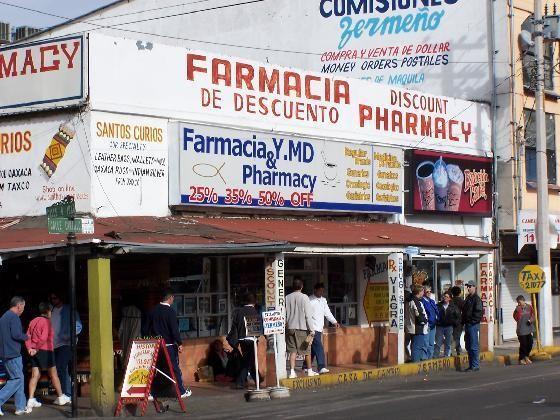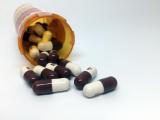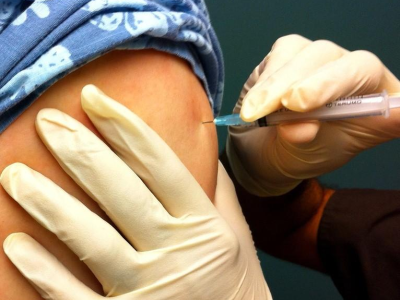A new analysis of global antibiotic use in young children has found that consumption patterns vary widely among countries, with no clear differences between high-income and low-income nations.
But the study, which is the first attempt to estimate the amount and type of antibiotics being consumed by children under the age of 5 at the country level, also found some concerning trends.
The positive news is that narrow-spectrum antibiotics, which should be used as the first or second options for common childhood bacterial infections, accounted for more than three quarters of antibiotics consumed by young children in 70 countries.
But in 17 countries, most notably China and India, broader-spectrum drugs with a higher potential for driving antibiotic resistance accounted for more than 20% of the antibiotics consumed by children. And overall use of a key first-line antibiotic was lower than it should be.
The findings appeared yesterday in The Lancet Infectious Diseases.
Access and Watch antibiotics
The analysis by researchers from St. George's University of London, the University of Hong Kong, and the World Health Organization (WHO), was based on wholesale antibiotic sales data in 70 high- and middle-income countries in 2015, obtained from a global pharmacy retail sales database.
Antibiotic consumption by young children was estimated on the basis of sales volume of childhood appropriate formulations (CAFs), which were defined as antibiotics that were either appropriate for children or specifically designed for easy use in children. The focus was on oral antibiotics used in the community, where 90% of antibiotic use occurs.
To determine the patterns of antibiotic use in each country, the researchers used three metrics based on the WHO's AWaRE (Access, Watch, and Reserve) antibiotics categories. These categories were established in the 2017 update of the WHO's Essential Medicines for Children list to guide responsible antibiotic prescribing and use and to ensure that antibiotics are available when needed.
Access antibiotics are first- and second-line antibiotics for common infections that should be available in all countries, while Watch antibiotics are drugs that should be used with caution because of their potential to promote resistance. Reserve antibiotics are last-resort drugs that should be used only for severe, multidrug-resistant infections.
For their analysis, the researchers focused on the percentage of Access antibiotics sold in each country, the percentage of amoxicillin sold in each country (the amoxicillin index), and the ratio of Access-to-Watch antibiotics sold in each country (the Access-to-Watch index).
Overall, the median volume of CAF standard units sold per country was 74.5 million. The median use of Access antibiotics across the 70 countries was 76.3% (interquartile range [IQR], 62.2 to 84.2), an indication that in both high- and middle-income countries, narrow-spectrum antibiotics are widely used to treat infections in young children.
"Our analysis confirms the key role of Access antibiotics for young children worldwide," the authors of the study write. "Furthermore, we were able to verify that Access antibiotics are widely used not only in middle-income countries but also in high-income countries."
But the study also found that the median use of Watch antibiotics was 12% (IQR, 8.8 to 19.8) and that Watch antibiotics accounted for more than 20% of antibiotics consumed in 17 countries. The highest percentages of Watch antibiotics consumed were in China (54%) and India (47.3%). The median Access-to-Watch index across the 70 countries was 6.0 (IQR, 3.1 to 9.8), meaning six standard units of Access antibiotics consumed for each unit of Watch antibiotics. But six countries—China, India, Bangladesh, Japan, Kuwait, and Vietnam—had an Access-to-Watch index of less than 1.
In addition, use of amoxicillin varied widely. The median amoxicillin index was 30.7% (IQR, 14.3 to 47.3), with amoxicillin accounting for more than 50% of CAFs in 15 countries and less than 10% in 11 countries. This is significant, because amoxicillin is one of the most effective and safe Access antibiotics for children, especially for respiratory tract infections, which account for at least two thirds of antibiotic prescriptions in young children.
"For children, countries should strongly promote the use of amoxicillin for most common antibiotic treatment indications encountered in community practice," the authors write.
Another noteworthy finding was the range of CAFs that were unclassified—from 0.8% in Russia to 33.6% in Germany. This category of drugs includes most fixed combinations of drugs and could reflect either narrower-spectrum or broader-spectrum antibiotic use, the authors note, and reclassification of these drugs into the Access or Watch categories could shift the Access-to-Watch balance in several countries.
Metrics could aid stewardship
The researchers say beyond providing a rough idea of consumption patterns, the use of these metrics to assess antibiotic use in young children will help countries start to identify inappropriate use and develop antibiotic stewardship targets, which was the WHO's ultimate goal in creating the categories.
"Joint interpretation of these three metrics will help to identify broad areas for national antibiotic stewardship and guideline development, even when information about indication is not available," they write. "Reviewing national access percentages and aiming to promote Access antibiotic use could be the first step for states wanting to engage in national antibiotic stewardship."
Antibiotic stewardship experts Marc Mendelson, PhD, and Adrian Brink, MBChB, of the division of infectious diseases and HIV medicine at the University of Cape Town, agree. In an accompanying commentary, they say that while the metrics are not a definitive measure of inappropriate antibiotic use in young children, they provide, for the first time, a "comprehensible picture" of global community childhood antibiotic use—an important first step in helping countries identify areas for improvement.
"Outpatient antimicrobial stewardship is a novel area for improvement, and optimal metrics of antimicrobial use in this setting are unknown," they write. "The first laudable attempt to develop simple metrics of global child community antibiotic use, based on the WHO AWaRe classification, is a necessity that was until now a challenge in lower-income and middle-income countries."
See also:
Dec 3 Lancet Infect Dis abstract
Dec 3 Lancet Infect Dis comment





















